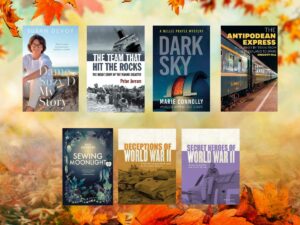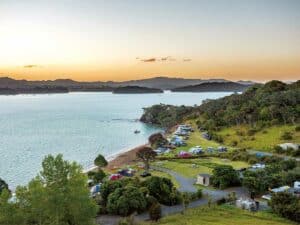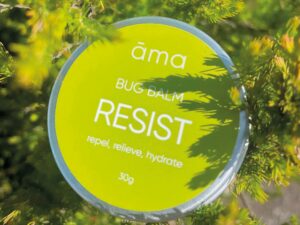Like many motorhomers, being able to explore New Zealand’s nature and wildlife is one of the reasons I love this lifestyle so much, and recently I’ve become interested in a new aspect of New Zealand nature - the amazing birdlife.
 |
Skye Wishart |
This might have something to do with my good friend, Skye Wishart, who, together with photographer Edin Whitehead, created the gorgeous book, The Brilliance of Birds. Reading Skye’s entertaining and fascinating text about our country’s birds, it’s hard not to feel more curious and passionate about them. So I caught up with Skye to get her tips for the best spots to go bird watching.
Pūkorokoro Miranda
 |
Wild kakī |
This popular spot on the Firth of Thames is one of the most accessible places to meet feathered friends. Visit the Shorebird Centre, then head out along the many boardwalks to the mudflats to get up close and personal with the wildlife - best seen two hours either side of high tide.
Birds to see: This is shorebird central; often, there will be more than 10,000 birds milling around. Probably the most impressive bird to meet here is the eastern bar-tailed godwit (kuaka), the world’s longest non-stop flyer.
 |
Wrybills spend part of their lives foraging in braided riverbeds, but also venture out to estuaries and beaches during nonbreeding times |
These amazing birds fly non-stop from Alaska to New Zealand (more than 11,000km) at speeds of up to 60km/h. Make sure you also look out for the wrybill (ngutu parore), a bird with a strange sideways beak that can only be found in New Zealand.
It’s quite fascinating to watch how it turns its head sideways to feed, somehow avoiding severe neck pain. And keep an eye out for the pied stilt (poaka) with its super-long legs, and the delicate black-billed gull (tārapunga), the world’s rarest gull.
Getting there: Find Pūkorokoro Miranda at 283 East Coast Road, Miranda.
Cost: Free. But donations are welcome.
Learn more: miranda-shorebird.org.nz
Where to stay: There are two excellent overnight-parking options nearby. The freedom-camping site at Ray’s Rest, just a few kilometres further north along East Coast Road, and Miranda Holiday Park with its own hot pools.
While you’re there: Visit the nearby Miranda Hot Pools. A great way to relax after a day out in nature looking for birds.
Cape Kidnappers
 |
Gannets, with their sharp beaks, are endlessly gentle when greeting their partners or preening their chicks. The beak is serrated along the inside edge for gripping prey |
It turns out that Hawke’s Bay is not just worth a visit for wine-lovers. There is also plenty to see for bird watchers - most notably the gannet colony at Cape Kidnappers.
Birds to see: Gannets – lots of them. Cape Kidnappers has the biggest mainland nesting colony of Australasian gannets (tākapu) in the world, now accommodating more than 20,000 gannets at peak time (October to March).
Skye’s section about gannets in The Brilliance of Birds almost reads like a thriller. “From up to 20m in the air, gannets plunge into the water at insane speeds to catch small fish and squid - but being a daredevil can cause accidents.”
Who wouldn’t want to see those daredevils in action? But be warned, gannets are not only famous for their fishing methods but also for living in smelly colonies, so prepare your nostrils.
Getting there: You can walk to Cape Kidnappers along the beach from Clifton, but it’s a 19km return trip and only accessible at low tide. Those looking for a quicker and easier way can book a tour with one of the local providers. (At the time of writing, access via the beach was closed due to slips. Check with the tour providers or DOC for the latest updates.)
Cost: Walking along the beach is free. Tours start at $48.
Learn more: Visit gannetsafaris.co.nz or gannets.com
Where to stay: Clifton Motorcamp is the closest - and a great option, especially if you’re planning to walk. Te Awanga Point Holiday Park is also close by and New Zealand Motor Caravan Association (NZMCA) members looking for a simple option can park at Clifton Road Reserve for a donation.
While you’re there: Head up to Te Mata Peak for stunning views over Hawke’s Bay.
Ōkārito
 |
Outside the breeding season, kōtuku spread across New Zealand to forage in wetlands and marshes |
This lagoon, on the west coast of the South Island, about 25km north of Franz Joseph, is worth a visit for its stunning scenery alone - the amazing birdlife is the cherry on top.
Birds to see: The area is famous among bird enthusiasts as the only breeding colony of white heron (kōtuku) in New Zealand. Māori legend has it that spotting this sacred bird even just once in your lifetime is good luck.
With about only 200 of them in New Zealand, all of which come to Ōkārito to breed between mid-September and early March, you would be considered very lucky spotting one anywhere other than here.
 |
Royal spoonbills are often found foraging or roosting together |
In addition to the white heron, you might also see the royal spoonbill (kōtuku ngutupapa) with its giant beak that looks a bit like a spoon, and at night you might even see the particularly rare kiwi, known as the Ōkārito brown kiwi (rowi).
Getting there: Follow SH6 north from Franz Joseph for about 17km and then turn left onto Forks-Ōkārito Road. You will get to the lagoon after about 10km. While there is a public walkway (Ōkārito Trig Walkway), the only way to get to the white heron colony is via a guided tour.
Cost: General access to the area is free. Tours start at $150 for adults.
Learn more: Visit whiteherontours.co.nz or okarito.co.nz
Where to stay: Ōkārito Campground is a peaceful option right at the lagoon. Another option is the nearby DOC site Otto/MacDonald as well as several parks in Franz Joseph - including an NZMCA park.
While you’re there… I probably don’t need to tell you to visit the glaciers. Maybe a less well-known sight that’s worth a stop is Lake Matheson, west of Fox Glacier, which offers some beautiful walking tracks.
Orokonui Ecosanctuary
 |
Saddleback |
If you find yourself on the other side of the South Island, Orokonui Ecosanctuary, north of Dunedin, is a great place to see some rare birds. It is the largest predator-free forest in the South Island, and several endangered species have found a safe home here away from the introduced possums, cats, stoats, rats and mice that are decimating bird populations elsewhere in New Zealand. You can explore the forest either on your own or with a
guided tour.
Birds to see: A wide variety of birds can be found here. Among them is the huge South Island takahē, one of New Zealand’s rarest birds, which was thought extinct for 50 years before being rediscovered in an isolated mountain range.
 |
Two young riflemen pester their mother (centre) for a feed of small insects |
If you’re lucky, you will also spot the South Island saddleback (tīeke), with a chatter that sounds like a van turning over with a flat battery; the friendly South Island robin (wheko pō); New Zealand’s smallest bird, the rifleman (titipounamu) - at 6g it’s about as heavy as this page; and the huge cheeky parrot, the kākā, which you might see ring-barking trees to get at the sap.
Getting there: Find the visitor centre at 600 Blueskin Road, Dunedin 9081.
Cost: All-day entry and self-guided walking are $20 for adults. Guided tours start at $35 (booking required).
Learn more: Visit orokonui.nz
Where to stay: There are no camping grounds near the sanctuary, but nearby Dunedin offers many options, including designated freedom-camping sites.
While you’re there: I highly recommend taking some time to explore the Catlins, south of Dunedin, which is one of my favourite parts of New Zealand. These are just four of the many areas Skye recommends.
There is no shortage of fantastic bird-watching spots around New Zealand - each with its own collection of feathered creatures. The Brilliance of Birds highlights that every bird has its own personality and story to tell and that each needs our help to protect it from habitat loss, pollution and introduced predators.
As Skye puts it: “To know more about birds is to feel something for them: to notice even the everyday ones and enjoy observing them going about their busy lives, but also to be inspired to help protect our more precious birds from their slide towards extinction.”
Book information

The facts about the birds in this story have been extracted from The Brilliance of Birds by Skye Wishart & Edin Whitehead, published by Godwit, RRP $55. Text © Skye Wishart, 2019. Photography © Edin Whitehead 2019.
Win a copy of The Brilliance of Birds

We have a copy of The Brilliance of Birds to give away.
Enter here before 13 December.





